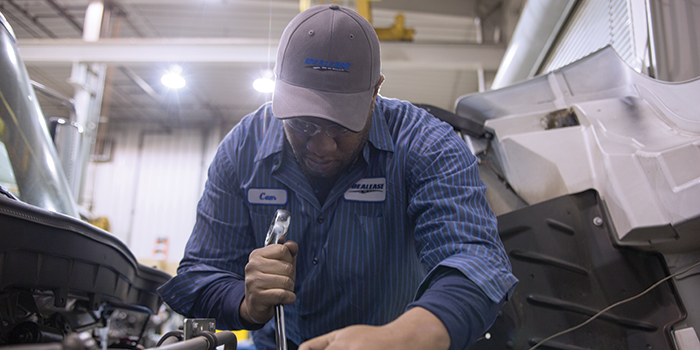“Fleets generate a lot of data,” Lay adds. “What matters is how data is captured and analyzed. The best way to use this information productively is to have the latest technology available to find the nuggets of important information you need to make the right decisions.”
Uptime from the start Dave Helge, CTP, CDS, vice president of maintenance and safety at Idealease, says vehicle uptime begins with the right specifications for the application to assure maximum performance and reliability without early component failures or premature wear.
“Product problems and quality defects also drive downtime,” Helge relates. “Truck and component manufacturers issue recalls and recommend repairs to address problems, and that requires vehicles to be in the shop and off the road. For example, an engine recalibration might require only 40 minutes to complete, but it’s likely that the vehicle will be out of service for part or even all of a day.
“Technology is ever-changing and challenging,” Helge continues. “Speed and accuracy of repairs and maintenance is a key to vehicle uptime and that means assuring that technicians have the right training and the best diagnostic and service tools. Electronic service tools are essential and costly. Managing multiple brands of vehicles increases that challenge as well as the investment required.”
Idealease believes that mobile maintenance is a key enabler of vehicle uptime because it leverages the time that the vehicle is parked at a terminal and the driver is off duty, Helge notes. “Driving a vehicle into the shop for routine maintenance and repairs could require one or two drivers and that cuts into their Hours of Service,” he states. “Mobile service brings the technician, parts and service equipment to the vehicle, saving both driver time and fuel.
“New technologies are coming into play that will cut downtime further,” Helge adds, “such as telematics that allow manufacturers to complete upgrades—just like we update our cell phone operating systems over the Internet—eliminating the need to bring the vehicle to a service location.”
Specifications, product quality, service technician capabilities and training, and maintenance and repair management practices are all factors that contribute to downtime. Fleets that have control over these factors can assure they are making the most effective choices.













